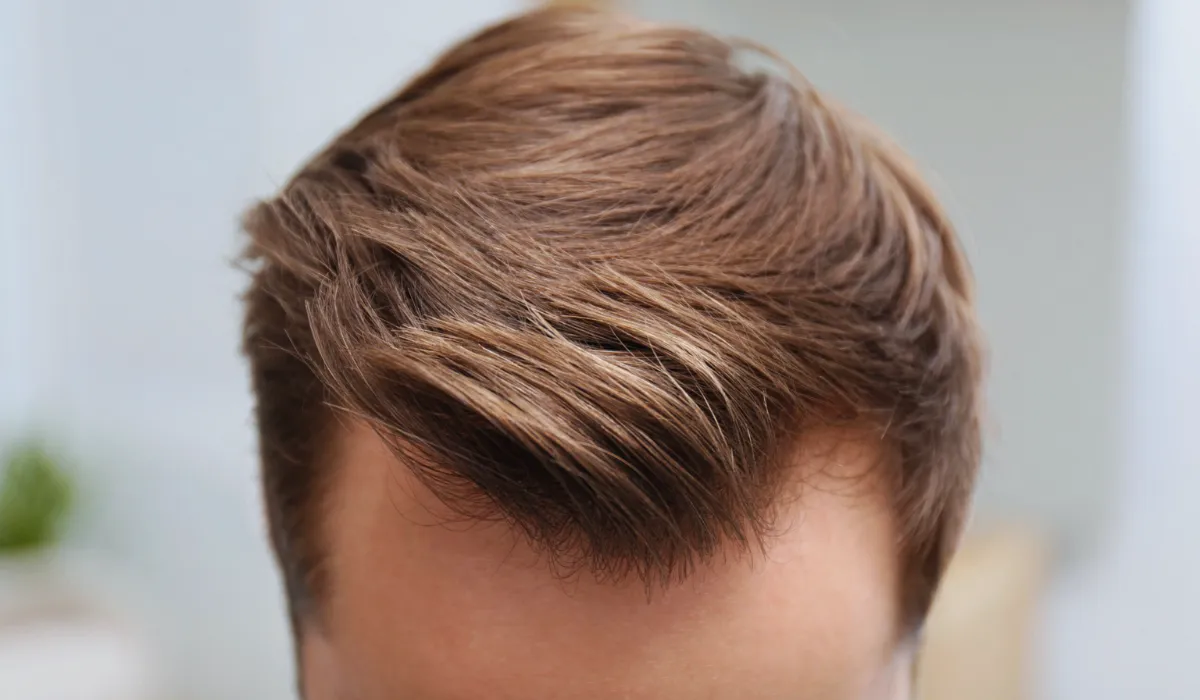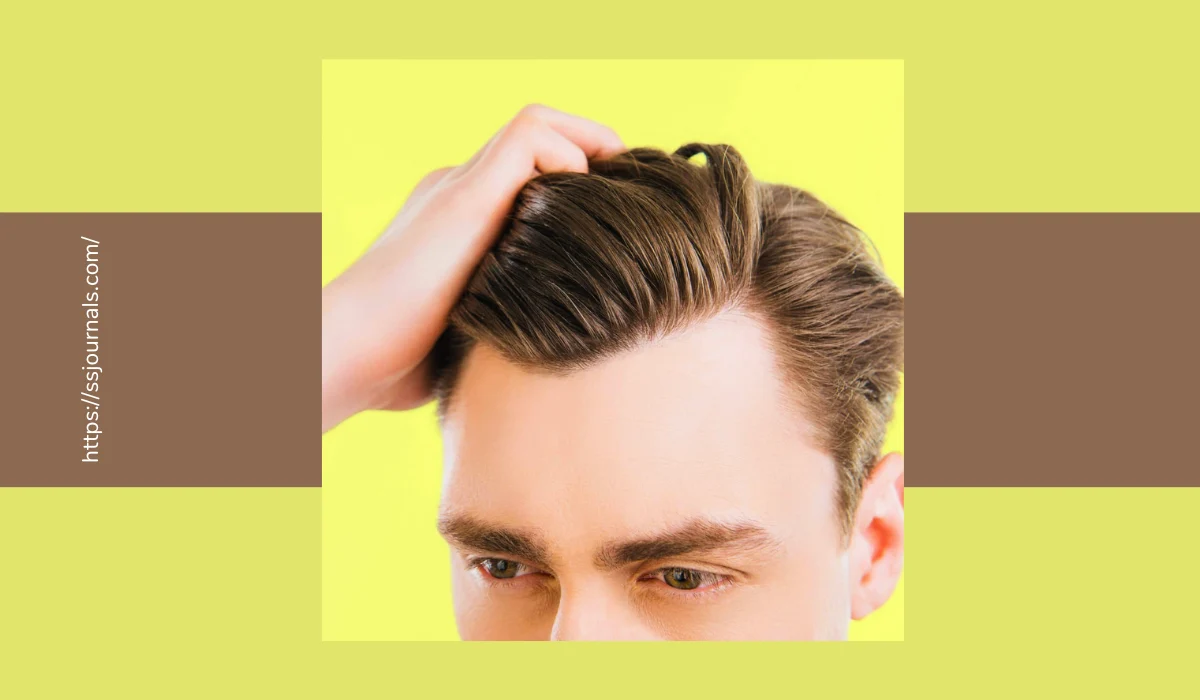Do you find yourself staring at the mirror, wishing your hairline wasn’t shaped like a widow’s peak? Well, you’re not alone. Many people struggle with this unique hairline pattern, and it’s a common concern for both men and women. While a widow’s peak hairline can be a distinctive feature, some prefer a smoother, more even look.
The good news is, there are several options available to help you achieve a flat hairline. From simple hairstyling techniques to more advanced treatments, this article will guide you through the various methods to transform your widows peak hairline.
Widows Peak Hairline
But before we dive into the solutions, let’s first understand what a widow’s peak hairline is. It’s a V-shaped point in the middle of the forehead where the hair naturally grows in a different pattern than the rest of the hairline.

This unique hairline shape is often genetic and can be seen in both men and women. It’s believed to be caused by a combination of hormones and the way hair follicles develop during embryonic development.
Now, if you’re ready to bid farewell to your widow’s peak hairline, keep reading. We’ll explore a range of techniques, from temporary fixes to more permanent solutions, so you can rock a sleek, flat hairline with confidence.
Hairstyling Techniques
If you’re looking for a quick and temporary solution, hairstyling techniques can be an excellent option.
Here are a few tricks you can try:
Use Hair Fibers or Powder
Widows peak hairline and pattern balding can be cleverly concealed using hair fibers or powder. These products are designed to mimic the appearance of real hair and can help fill in sparse areas, creating the illusion of a flat hairline.
Hair fibers are typically made from keratin, the same protein found in human hair, and come in various shades to match your natural hair color. They’re applied directly to the scalp using a specialized applicator or by sprinkling them onto the desired areas. The fibers cling to your existing hair, providing a seamless and natural-looking coverage.
Style With a Side Part
A deep side part can help camouflage a widow’s peak hairline by creating a sweeping effect across the forehead. This hairstyling technique works by strategically parting your hair to one side, allowing the longer strands to fall over the widow’s peak area.
To achieve this look, use a comb or your fingers to create a deep, clean part on the side of your preference. Then, use a styling product like pomade or wax to sleek the hair down and sweep it across your forehead, covering the widow’s peak. This method works best for those with longer hair or for those who prefer a more sophisticated, polished look.
Wear a Headband or Hat
Accessorizing with a headband or hat can be a stylish and practical way to cover up your widow’s peak hairline and give you a seamless look. Headbands, especially those with a wider band, can effectively conceal the widow’s peak area, creating the appearance of a flat hairline.
Similarly, wearing a hat or cap can also help camouflage a widow’s peak hairline. Baseball caps, beanies, or fedoras are all great options to consider. Just make sure to choose a style that complements your face shape and personal style.
Hair Transplantation
For those seeking a more permanent solution for widows peak hairline, hair transplantation is an option worth considering. This surgical procedure involves relocating hair follicles from the back or sides of the head (areas known as the “donor” sites) to the frontal area, creating a new, flat hairline.
Hair transplantation can be an effective solution for individuals experiencing receding hairline or pattern balding, as it addresses the root cause by restoring hair growth in the desired areas. It’s particularly beneficial for those with significant hair loss or a pronounced widow’s peak hairline that is difficult to conceal with hairstyling techniques alone.
There are two main types of hair transplantation techniques:
- Follicular Unit Extraction (FUE): In this method, individual follicular units (naturally occurring groups of 1-4 hairs) are extracted one by one from the donor area using a specialized punch tool. These grafts are then carefully implanted into the recipient area, creating a new hairline.
- Follicular Unit Transplantation (FUT): Also known as the “strip” method, FUT involves removing a strip of skin from the donor area, typically the back of the scalp. The hair follicles are then carefully dissected from the strip and transplanted into the recipient area.
Both techniques are outpatient procedures performed under local anesthesia and require a recovery period of several days to weeks. It’s important to note that hair transplantation is a surgical procedure and carries potential risks and side effects, such as scarring, bleeding, and infection.
It’s crucial to consult with a qualified and experienced hair restoration surgeon to determine if you’re a suitable candidate and to understand the potential risks and benefits.
Medication and Topical Treatments
If you’re in the early stages of hair loss or have a mild widow’s peak hairline, medication and topical treatments can be helpful. These options work by promoting hair growth and slowing down further hair loss, potentially reducing the appearance of the widow’s peak over time.
Minoxidil: This over-the-counter topical solution, commonly known by the brand name Rogaine, is applied directly to the scalp and can stimulate hair growth in areas affected by peak hair loss or a receding hairline. It’s important to note that minoxidil is a long-term treatment, and results may take several months to become visible.
Finasteride: This prescription medication, also known as Propecia, is taken orally and works by blocking the production of dihydrotestosterone (DHT), a hormone that contributes to hair loss in individuals with a genetic predisposition.
Low-level laser therapy (LLLT): This non-invasive treatment uses low-level laser devices to stimulate hair follicles and promote hair growth in the affected areas, including the widow’s peak region.
Cosmetic Procedures
For those seeking a more dramatic transformation, cosmetic procedures like forehead contouring or hairline lowering surgery can be considered. These surgical techniques involve reshaping the hairline and forehead to create a flatter, more desirable appearance.
- Forehead Contouring: This procedure involves removing a portion of the skull bone along the hairline to create a more prominent or protruding forehead. By reshaping the forehead, the widow’s peak hairline can be minimized or eliminated, resulting in a smoother, flatter appearance.
- Hairline Lowering Surgery: Also known as a hairline advancement or hairline repositioning procedure, this surgical technique involves moving the entire hairline forward and downward, effectively lowering the position of the widow’s peak and creating a more youthful, flat hairline.
It’s important to note that these procedures are more invasive and carry potential risks, such as scarring, nerve damage, and infection. They also require a longer recovery period and may involve significant swelling and bruising. As with any cosmetic surgery, it’s crucial to consult with a qualified and experienced plastic surgeon to discuss the potential risks, benefits, and expected outcomes.
Conclusion
Transforming your widow’s peak hairline into a flat hairline is a journey that requires patience, commitment, and the right approach. Whether you opt for temporary hairstyling techniques or explore more permanent solutions like hair transplantation or cosmetic procedures, the key is to find a method that aligns with your goals, lifestyle, and budget.
Remember, every individual’s hair and scalp condition is unique, so it’s essential to consult with a trusted hair professional or dermatologist to determine the best course of action for your specific situation.
It’s also important to have realistic expectations and understand that achieving a flat hairline may require a combination of techniques or a gradual process. Consistency and patience are crucial when it comes to seeing desired results.
Embracing your natural features is equally important. While a flat hairline may be your preference, it’s essential to love and accept yourself, regardless of your hairline shape.
Ultimately, the decision to change your widows peak hairline is a personal one, and the journey should be driven by your own desires and confidence. So, have you considered any of these options to achieve a flat hairline, or are you content with your unique widows peak? Share your thoughts and experiences in the comments below!

